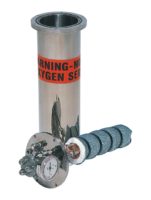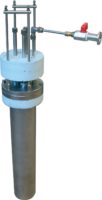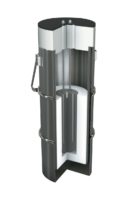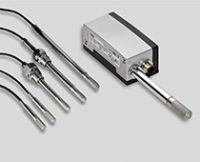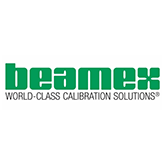Product Description
Nitrogen Boiling Point
Isotech Nitrogen Boiling Point Apparatus is designed specifically to realize and maintain the liquid/vapour equilibrium (boiling point) of nitrogen or argon, for the calibration of thermometers on the International Temperature Scale of 1990.
The Boiling Point Apparatus is self-contained and refrigerated by liquid nitrogen or liquid argon, which must be supplied by the user. Either liquid is suitable for the purpose. Liquid nitrogen is generally less costly and more readily available than liquid argon. The Apparatus does not require electrical power for its operation.
The Boiling Point Apparatus will maintain the liquid-vapour equilibrium of nitrogen (-195.798°C) or of argon (-185.8468°C) indefinitely, provided boiled-off gas is replenished.
ITS-90 specifies the triple point of argon (-189.3442°C) as the low end of the long-stem Standard Platinum Resistance Thermometer range. As a practical matter, realization of this triple point is a costly (in equipment and time) and complicated process.
Most laboratories will choose to calibrate this end of the platinum range by comparison of the thermometer under test with a thermometer of known calibration. National Laboratories themselves will invariably calibrate thermometers submitted to them by comparison, realising the actual argon triple point only infrequently for calibration of their own reference thermometers. The National Physical Laboratory of England makes this statement:
“Most thermometers (submitted for calibration) will involve measurements (by) … comparison with NPL standards in a bath of liquid nitrogen (about -196°C)”
Model 18205 Comparator is designed for precisely such comparison calibration. It comprises a stainless steel dewar, an inner equalizing block having wells for 3 thermometers, top connections for filling and monitoring the level of liquid coolant, a pressure safety blow-off and a manifold which may be used to thermally tie the thermometers under test to the equalizing block with helium gas (optional).
Since the slopes (dR/dT) of Standard Platinum Resistance Thermometers are very similar at any temperature, calibration uncertainties not larger than 0.002K can be obtained at a small fraction of the cost of an absolute calibration.

